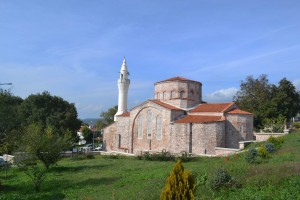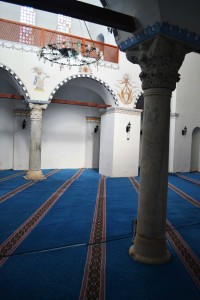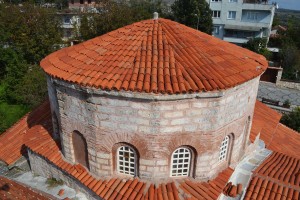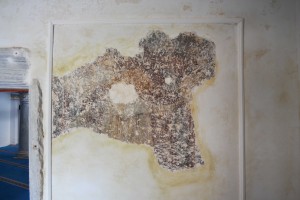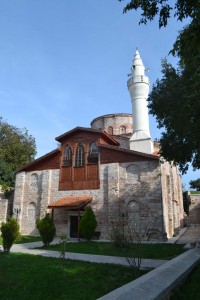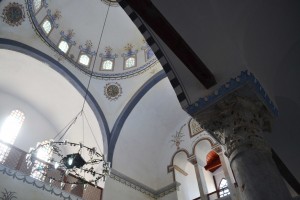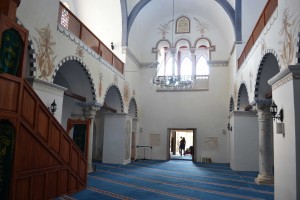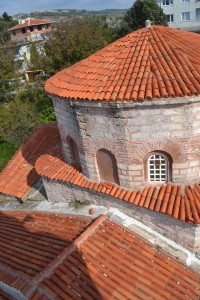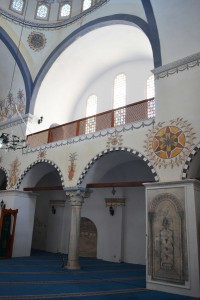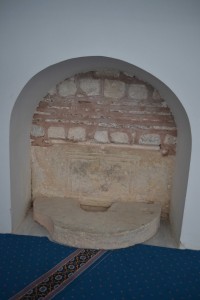Vize in the province of Kırklareli is the centre of what was a flourishing district in the time of Justinian. (41.576271, 27.767357) It was already a busy place in Roman times with the foundations of the fortress on the top of the hill dating from about 75BC. There is a nice Roman theatre nearby.
Justinian had this particular Church of Haghia Sophia built on the foundations of a temple to Dionysus. A relief said to be of Dionysus is visible close to the church. Conversion to a mosque in about 1450 added a minaret until the Balkan Wars toppled it. Aya Sofya then stood in rather poor condition until a comprehensive recent restoration. The interior decoration seems to satisfy both Byzantine and Muslim sensitivities. Bauer and Klein note that much of the work was carried out without the direction of archaeologists so the details are unlikely to preserve a great deal of authenticity. Vize’s official website [2] has some nice pictures of Aya Sofya from the recent past.
In the ninth century, the church became associated with St Mary the Younger, who lived in Vizye (Vize’s Byzantine name), carried out various philanthropic acts in the obligatory blameless life and was killed by her husband. She was buried in Hagia Sophia in about 903 and miracles began to occur in the vicinity of her tomb. During the occupation and destruction of Vizye by the Bulgarians under Tsar Symeon, flames emerged from her tomb, frightening the Tsar. The miracles continued and frescoes of St Mary were painted in the church. Some survive in poor condition. There is a Dumbarton Oaks [3] publication by Alice-Mary Talbot about this saint.
This is probably the most informative source about this church:
Bauer, F. and H. Klein (2006) The Church of Hagia Sophia in Bizye (Vize): Results of the Fieldwork Seasons 2003 and 2004. Published by Dumbarton Oaks Research Library and Collection. Distributed by Harvard University Press, 2007. Available online at: http://www.columbia.edu/cu/arthistory/faculty/Klein/The-Church-of-Hagia-Sophia.pdf [13] Accessed 7th Feb 2016
Ötüken, Y. and R. Ousterhout (1989) Notes on the Monuments of Turkish Thrace. Anatolian Studies Vol 39 pp 121 – 149. British Institute at Ankara. Available online at: https://www.academia.edu/446280 [14]/Notes_on_the_Monuments_of_Turkish_Thrace [14] Accessed 7th Feb 2016
 [15]
[15]
